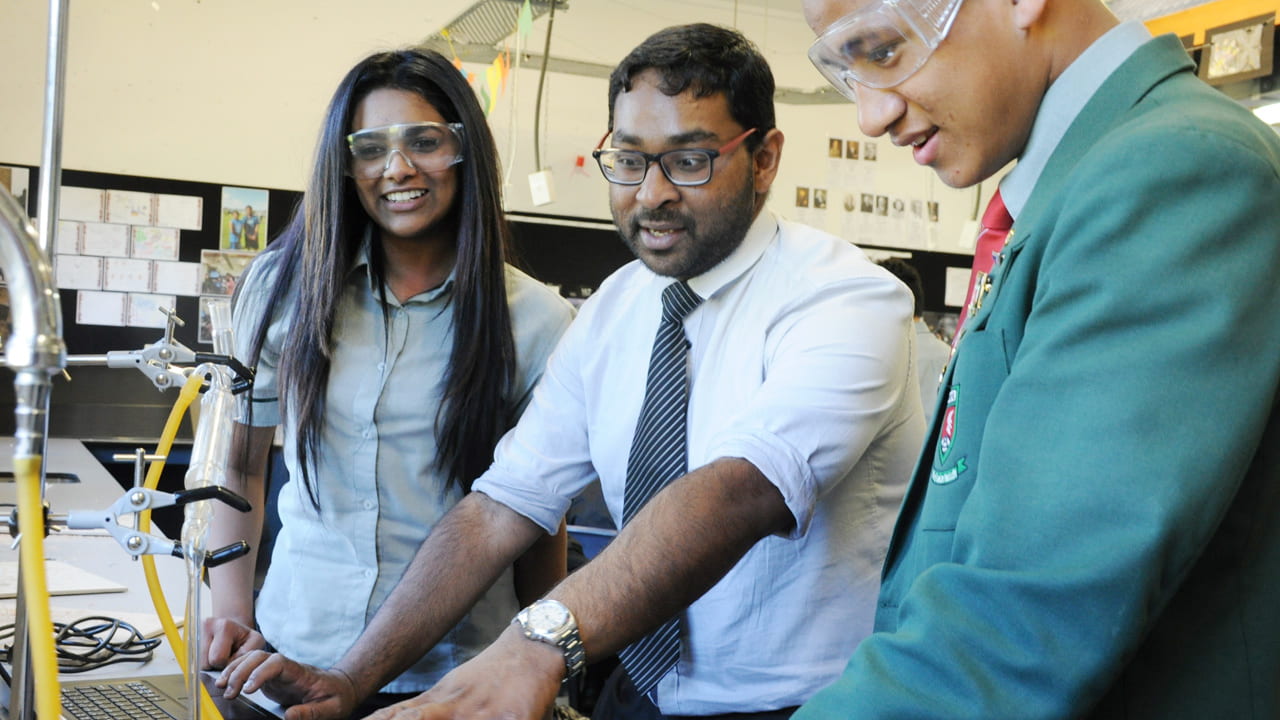Authentic, work integrated and community integrated assessment
Design authentic capability-based assessments to develop students’ lifelong skills.
Why use authentic assessment?
Traditional exams and tests generally focus on measuring students’ ability to remember and record course content. Authentic assessment requires the use and application of knowledge and skills in real-world experiences or plausible situations. It engages deeper thinking, problem-solving, transferrable skills and ethical attitudes called upon in real life.

Designing more authentic assessments can help students to:
- Develop their lifelong learning skills, including cognitive skills (e.g., critical thinking, decision-making), meta-cognitive skills (e.g., reflection), and social capabilities (e.g., communication and collaboration). 1
- Apply what they have learnt to the more complex and messy situations found in ‘the real world’. 2
- See themselves as becoming a practitioner in their discipline. 3
- Engage with communities and professions, developing their sense of meaning, belonging, social justice, and civic duty to place and people.
Small steps
Change the nature of the questions used in written assessment. Incorporate scenarios that are more realistic and relevant to students, self, and community to encourage agency and belonging by following these simple steps to design a more authentic assessment. You can also create buy-in to the scenario by considering how you might present an authentic context in your assessment.
Embed strengths-based approaches by identifying graduate capabilities that can be observed or measured.
Encourage a cognitive challenge (possible social, cultural or sustainable) that requires evaluative judgement to practice problem solving and synthesis.
Encourage social, environmental, and community engagement in tasks or activities to build towards and complete assessment artefacts.
Making your assessment more authentic
Truly authentic capability-based assessments can have a higher construct validity 4 than ‘traditional’ tests because they are designed so that:
- Tasks appropriately reflect the capability that needs to be assessed.
- The content of an assessment involves authentic tasks that represent real-life problems of the knowledge domain assessed.
- The thinking process that experts use to solve the problem in real life are also required by the assessment task. 5
Because authenticity is subjective, student perceptions about how authentic an assessment task is influences how likely students will learn positively from it. Therefore, rather than “teaching to the test”, teaching and instruction must also be focused on authentic capability development in order to align with the authentic assessment task. 6 Students also need the opportunity to practice with the form of assessment before it is used as an assessment. 7
Use the five-dimensional model for authentic assessment
To consider how you can make your assessment more authentic:
- Task: What do you have to do?
Authentic assessment consists of a problem task that confronts students with activities that are also carried out in professional practice. It should resemble the real-world criterion needed regarding the integration of knowledge, skills, attitudes, its complexity, and ownership. Students should perceive the task as representative, relevant, and meaningful.
- Physical context: Where/How do you have to do it?
The physical context of an authentic assessment should reflect a real-world scenario, e.g. availability of supporting resources containing both relevant and irrelevant information, tools available, time constraints to do assessment.
- Social context: With whom do you have to do it?
Consideration of social processes present in real-life situations, e.g. collaboration, social interaction, individual efforts, accountability.
- Assessment result or form: What has to come out of it? What is the result of your efforts?
The type and volume of output from the assessment is appropriate to what would be produced in real life and can be evaluated for relevant capabilities. Can be an array of tasks to enable full demonstration and evaluation. Students should have the opportunity to present their work to others orally or in written form to defend their work to ensure their mastery is genuine.
- Criteria and standards: How does what you have done have to be evaluated or judged?
The criteria (characteristics of the assessment result that are valued) and standards (levels of performance expected) should be made explicit and transparent to students beforehand because it guides learning. Criteria should be related to a realistic outcome, and criteria and standards should be based on criteria used in real-life situations.
Authentic assessment in practice
Teaching Tip: Link theory to lived experience through place-based assessment
Inspired by Anthony Gampell’s ‘SUSTAIN Citizenship Portfolio’, this adaptable activity invites students to engage with their physical environment and respond through creative and reflective outputs.
Insights: Whanaungatanga as a foundation for engagement and inclusion
Senior Lecturer Ake Nicholas demonstrates how embedding relationship-building can enhance engagement, equity and inclusivity in whakatakoto reo (written Māori) courses.
Insights: Relationship-building by integrating Māori epistemologies into Chinese language education
Associate Professor Danping Wang uses relationship-building to transform the way languages are taught.
See also…
Page updated 12/09/2025 (stylistic changes)
- Gulikers, Judith T. M., Theo J. Bastiaens, and Paul A. Kirschner. “A Five-Dimensional Framework for Authentic Assessment.” Educational Technology Research and Development 52, no. 3 (2004): 67–86. http://www.jstor.org/stable/30220391. ↩
- Morris, Gayle, David Lines, Murray Ford, Te Oti Rakena, Barbara Staniforth, Alan Shaker, Rachelle Singleton, Tim Baice, and Kaitlin Beare. Signature Pedagogical Practices: Transforming learning and teaching delivery and transition pedagogy at Waipapa Taumata Rau I University of Auckland into an experience that reflects the values of Taumata Teitei. Auckland: University of Auckland, 2022. ↩
- Boud, David, and Filip Dochy. Assessment 2020. Seven propositions for assessment reform in higher education. ALTC Report. Sydney: University of Technology, 2010. https://www.uts.edu.au/research-and-teaching/learning-and-teaching/assessment-futures/overview. ↩
- CAST, “UDL and assessment,” UDL On Campus: Universal Design for Learning in Higher Education, n.d., https://udloncampus.cast.org/page/assessment_udl ↩
- Gulikers, Bastiaens, and Kirshner, 68 (citing Gielen, Sarah, Filip Dochy, and Sabine Dierick. Optimising New Modes of Assessment: In Search of Qualities and Standards. 2003) ↩
- Gulikers, Bastiaens, and Kirshner, 68 ↩
- Gulikers, Bastiaens, and Kirshner, 71 (citing Schnitzer, Sandra. “Designing an Authentic Assessment.” Educational Leadership 50, no. 7 (1993)) ↩
- Gulikers, Bastiaens & Kirshner, 73 ↩



